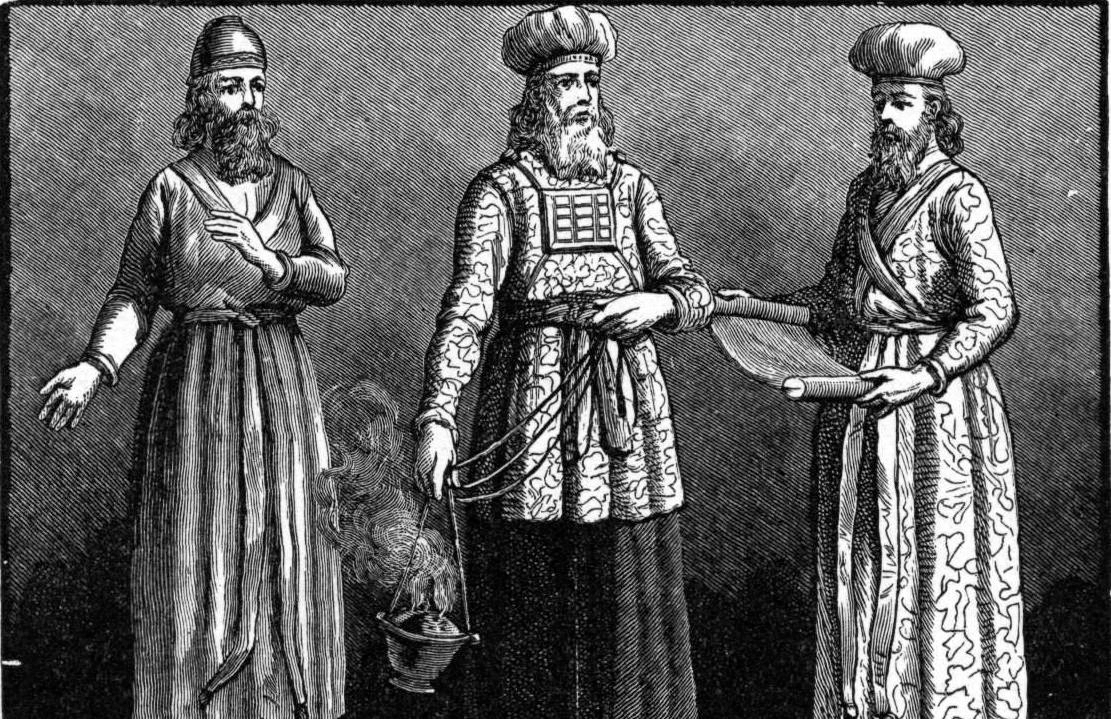Commentary on Parashat Vayakhel, Exodus 35:1-38:20, 30:11-16
This week’s reading describes at length the elaborate outfit of the Kohanim (Priests) in the Mishkan (Tabernacle). Not only were these elaborate and striking vestments used during the 40 years of wandering in the wilderness, but they also became the paradigm for the priestly robes in Solomon’s Temple in Jerusalem in a later period. They must have added a powerful sense of majesty and pageantry to the earliest worship of the one true God.
It is only natural that, as the culmination of the rites of the Mishkan, the Torah would focus on the human beings who are to serve in that place. But why the emphasis on clothing? After all, isn’t it true that what matters about people is what is in their hearts? Shouldn’t we find elaborate descriptions of Aaron’s personality, rather than lengthy and tedious elaborations of his robes? Why all this focus on externals?
More Than Covering Our Bodies
Clothing is more than simply a way of covering our bodies. In determining how we clothe ourselves, we convey a message to the world about our values, priorities and relationships. A few examples will suffice. A woman who paints her lips tells us that she is financially secure, a part of Western culture, responsible and together. That same lipstick, no less colorful, if smeared on her forehead, would communicate to all who saw her that there was something amiss.
Similarly, a piece of cloth around a man’s neck indicates that he is a businessman, that he identifies with mainstream values, that he occupies a certain financial and social position. If he wore that same tie around his head or around his waist, he would be communicating an identification with a counter-culture–a rejection of what the exact same tie normally represents.

Help us keep Jewish knowledge accessible to millions of people around the world.
Your donation to My Jewish Learning fuels endless journeys of Jewish discovery. With your help, My Jewish Learning can continue to provide nonstop opportunities for learning, connection and growth.
So it is that all clothing indicates values, revealing with what part of society we identify and where our aspirations lie. The elaborate and startling clothing of the Kohanim indicate how their worldview and their values functioned too. The fact that they wore intricate and expensive clothing amidst general simplicity, that they wore elaborate jewelry when no one else did so, indicates that biblical Judaism stressed the royalty of God. Just as God’s servants dressed like royalty, so we were to relate to the entire ritual surrounding God as though God were a grand sovereign.
Throughout Jewish history, clothing of the religious leadership indicated how Jews perceived of their relationship to God and to each other. The Rabbis of the Mishnah and the Talmud dressed no differently than any other Jews–stressing the equality of all before God.
Decorum & Dignity
In the early parts of this century, many Rabbis donned clerical robes and stood on platforms high above their congregants–by way of emphasizing the dignity, majesty and ‘otherness’ of God and of the sacred service.
In our own day, the dominant tone of Jewish worship has moved away from a primary concern with decorum and dignity. Instead, we seek community, warmth and support. The clothing of our religious leaders, and the choreography of our services, reflect that contemporary emphasis on the ‘haimish‘ (homey).
Many rabbis have abandoned formal robes as being too cold, too churchlike. Often, those same rabbis, seeking to foster warmth and community, will leave the isolation of the ‘bimah‘ (raised area at the front of a synagogue) when they deliver their ‘drashot‘ (sermons). Doubtless, the way rabbis and cantors dress will continue to reflect the developing perspectives of future Jewish communities.
How we perceive our relationship to each other, to our traditions, and to our God, are communicated nonverbally. The medium is the message.
Provided by the Ziegler School of Rabbinic Studies, which ordains Conservative rabbis at the American Jewish University.



